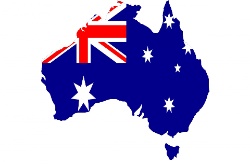Asia Pacific Countries Risk Rising HIV Infections Following United States Development Aid Funding Freeze
BANGKOK, 13 February, 2025—While the United States’ 90-day pause on foreign assistance has impacted the global AIDS response, U.S. Department of State waivers have allowed the resumption of HIV treatment and prevention of mother to child transmission services. Treatment programs in a number of Asia Pacific countries have been affected, with a more widespread reduction of community-led HIV prevention, stigma and discrimination, adherence counselling, social support and monitoring work. The abrupt decline of these services could derail the region’s progress toward epidemic control. UNAIDS calls for national, regional and international solidarity to quickly restore these activities, avoiding increased HIV transmissions and negative impacts for people living with HIV.
Ten countries’ HIV programs receive direct PEPFAR funding: Cambodia, India, Indonesia, Lao PDR, Myanmar, Nepal, Papua New Guinea, Philippines, Thailand and Viet Nam. Together with Bangladesh and Pakistan, these countries also receive US government funding for high-quality technical support to address a range of critical issues. The people most affected by HIV and the community-led organisations that provide them with prevention and psychosocial support services have been hardest hit. Community partners and UNAIDS country offices report widespread scaling-back of these operations and even closures. Community-led monitoring—a feedback system to improve the quality of HIV services—has also been impacted.
“Predictable access to HIV treatment is critical. But other HIV services are also essential and lifesaving,” explained Eamonn Murphy, Regional Director of UNAIDS Asia Pacific and Eastern Europe Central Asia.
“PEPFAR investments in Asia Pacific are especially strategic because they focus on the places and populations where the epidemic is growing. They prioritise the community-led interventions that are most effective. This complements inputs from governments, other donor countries like Australia, and development partners including the Global Fund. During the US foreign aid review period, we call on countries in the region, the development sector and the private sector to band together and ensure these crucial services continue,” Mr Murphy said.
PEPFAR partnership is key for Asia Pacific where HIV prevention progress has virtually stalled. There was just a 13% decline in new infections between 2010 and 2023. This is far lower than the global average reduction of 39% which was largely driven by steep drops in Eastern and southern Africa and Western and central Africa. Asia Pacific has the world’s second largest HIV epidemic. In 2023 there were an estimated 6.7 million people living with HIV in the region. There were 150,000 AIDS-related deaths that year and 300,000 new infections—one every two minutes.
“After four decades we know that we cannot end the AIDS epidemic through government-run clinics alone,” cautioned Harry Prabowo, Program Manager of the Asia Pacific Network of People Living with HIV (APN+). “PEPFAR’s focus on supporting community-led advocacy and services for testing, prevention, linkage to care and adherence is spot on. We need these community roles to be fully and sustainably funded. Without this, more people will be infected, more people will slip through the cracks and more people will die.”
At the country, regional and global levels UNAIDS is serving in its essential role to mobilize and convene partners, governments, and communities to assess and mitigate the impact of the pause on essential HIV services.


 UNICEF Aotearoa NZ: Myanmar Earthquake A Further Blow For Millions Of Children
UNICEF Aotearoa NZ: Myanmar Earthquake A Further Blow For Millions Of Children Greenpeace: 'Desperate And Deceitful'- Deep Sea Mining Frontrunner Turns Its Back On Pacific Nations
Greenpeace: 'Desperate And Deceitful'- Deep Sea Mining Frontrunner Turns Its Back On Pacific Nations 350.org: Australia Announces Election Dates, Pacific Islanders Rally To Vote For Climate
350.org: Australia Announces Election Dates, Pacific Islanders Rally To Vote For Climate UNICEF Aotearoa NZ: Global Aid Funding Cuts - 14 Million Children At Increased Risk Of Severe Malnutrition And Death
UNICEF Aotearoa NZ: Global Aid Funding Cuts - 14 Million Children At Increased Risk Of Severe Malnutrition And Death Oxfam Aotearoa: Humanitarian Operations In Gaza Severely Hampered; Famine Risks Increasing
Oxfam Aotearoa: Humanitarian Operations In Gaza Severely Hampered; Famine Risks Increasing UN News: Migrant Deaths In Asia Hit Record High In 2024, UN Data Reveals
UN News: Migrant Deaths In Asia Hit Record High In 2024, UN Data Reveals